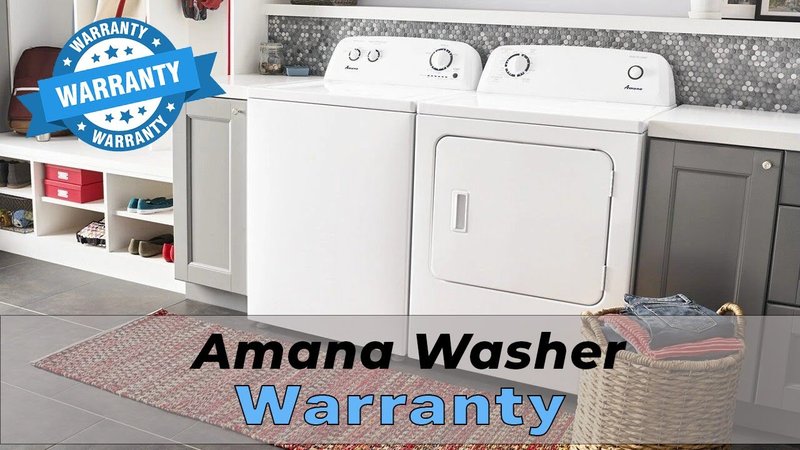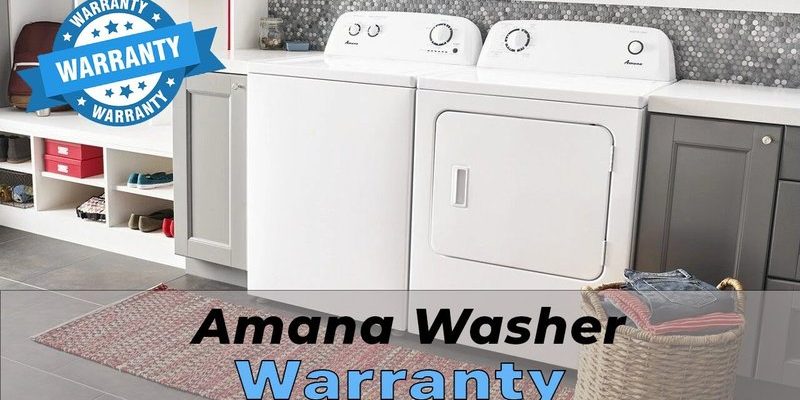
Imagine you inherited an Amana washer from your aunt or snagged a lightly used dryer from a neighbor. You want the peace of mind that comes with a warranty, but the paperwork and official registration typically go to the first buyer. You might be scratching your head, wondering if there’s any way to sync that warranty to your name or if you’re just out of luck. Let me explain how the warranty registration process works for used Amana laundry appliances and what your options are.
How Amana Warranty Registration Typically Works
Amana, like many appliance brands, ties its warranty coverage to the original purchase date and owner. When you register a new Amana washer or dryer, you usually provide the serial number, model number, and purchase details. This info goes into their system and starts the warranty “clock.”
Here’s the thing: the warranty is designed to protect the first buyer. That means when you register an appliance, Amana expects you to have bought it brand new from an authorized retailer. It’s a bit like buying a software license—it’s intended for use by the original purchaser. So if someone else bought that washer or dryer before you, the warranty period is technically already ticking, and registration in your name usually isn’t straightforward.
This system helps Amana track when a product was first sold and how long the warranty lasts. It also prevents people from gaming the system, like trying to restart a warranty after years of use. So, if you want to be covered, you have to understand if the warranty on your used Amana appliance is still valid and if it can be transferred or registered anew.
Can You Register a Used Amana Appliance for Warranty?
You might be wondering, “Okay, but can I still register my used Amana laundry appliance to get warranty coverage?” The short answer is: it depends. Usually, Amana does not allow you to register a used appliance under your name for the original factory warranty. Why? Because the warranty is linked to the original sale date and customer.
However, there is a *little* wiggle room if you can prove that the appliance is still within the warranty period based on the original purchase date. That means if the original owner hasn’t registered or activated the warranty yet, or if you’re able to get the original sales receipt, you might be able to transfer or register the warranty. But this isn’t a guarantee and depends on Amana’s policies and the retailer involved.
In any case, just registering the appliance with your info without proof of original purchase date won’t generally activate a new warranty. Think of it like a car’s title: you can own the vehicle, but the warranty follows the original sale, not just ownership.
What To Do If You Bought a Used Amana Appliance
If you just bought a used Amana washer or dryer, here’s what you can do to protect yourself:
- Ask for the original receipt or proof of purchase. This is the key to verifying the warranty status.
- Contact Amana customer service. They can often look up warranty information using the serial number and advise you on transfer possibilities.
- Consider third-party or extended warranties. Sometimes, retailers or independent companies offer protection plans on used appliances.
- Inspect the appliance thoroughly. Since warranty might not help, knowing exactly what condition your machine is in can save headaches down the road.
For example, when I once bought a used dryer, I asked the seller for the original receipt. Without it, I couldn’t register the warranty, but with the receipt, the manufacturer recognized the purchase date and allowed me to transfer the warranty. It was a bit of a process, but worth it for the peace of mind.
Why Warranties Usually Aren’t Transferable on Used Appliances
The logic behind warranties sticking with the original purchaser can seem frustrating, but it has a few practical reasons:
- Fraud Prevention: Manufacturers want to stop people from trying to reset warranty periods on used or refurbished units.
- Clear Ownership Tracking: Linking the warranty to the original buyer ensures proper use and claims handling.
- Variable Conditions: The manufacturer can’t guarantee how a previous owner treated the appliance, so they limit warranty coverage.
From a company’s perspective, a warranty is a promise to fix faults stemming from manufacturing errors, not wear and tear or misuse. Unfortunately, because used appliances have “history,” the brand can’t take full responsibility under a fresh warranty.
That said, some brands and even Amana in certain cases might offer limited warranty transfers if you have proper documentation. It’s a bit like transferring a gym membership—you need approval and paperwork.
How to Check an Amana Appliance’s Warranty Status
You might be thinking, “Can I just check online if my used Amana washer or dryer is still under warranty?” Good news: yes, you typically can.
Here’s a simple way to do it:
- Find the appliance’s serial number and model number. These are usually on a label inside the door or on the back.
- Go to Amana’s official website or call their customer support.
- Use their warranty lookup tool or provide the numbers to check the purchase date and warranty expiration.
If the appliance is still under warranty period, you can ask if it’s transferable or what your options are for claims. This check is especially useful if the previous owner lost paperwork but you want to get as much info as possible.
Alternatives to Manufacturer Warranty for Used Appliances
Since registering a used Amana laundry appliance for warranty can be complicated, what else can you do to cover yourself? Here are some practical alternatives:
- Extended Warranty Plans: Many appliance stores or third-party companies sell protection plans that cover repairs on used machines.
- Home Warranty Services: These plans cover multiple home appliances, including laundry units, under one contract.
- DIY Troubleshooting: Learning to reset, code-read, or perform minor fixes yourself can save money—especially with common issues like sensor errors or clogged ducts.
For instance, knowing how to reset an Amana washer or replace a worn-out belt can sometimes prevent a service call. It’s like having a trusty toolbox—handy for unexpected hiccups.
Final Thoughts: What to Keep in Mind When Buying Used Amana Laundry Appliances
If you’re shopping for a used Amana laundry machine, here’s the takeaway: don’t rely on registering it for a new warranty unless you have solid proof of the original purchase and transfer approval. Trying to do so without documentation is often a dead end, and you might be left without warranty support.
That said, knowing the appliance’s exact model, serial numbers, and warranty status can help you make smarter decisions. And if you can get a third-party protection plan or extended warranty, that added layer of coverage can be a lifesaver—especially since laundry machines do have a habit of acting up at the worst times.
At the end of the day, buying used appliances is a bit like adopting a pet: you get something great, but you need to accept some risks and be ready to care for it yourself. Learning a bit about troubleshooting, warranty policies, and proper maintenance will keep your Amana washer or dryer humming along much longer, whether or not you can register it for warranty.
If you want warranty peace of mind, aim to buy new. But if you do go used, ask the right questions, get the paperwork, and explore alternatives—your laundry routine will thank you.
